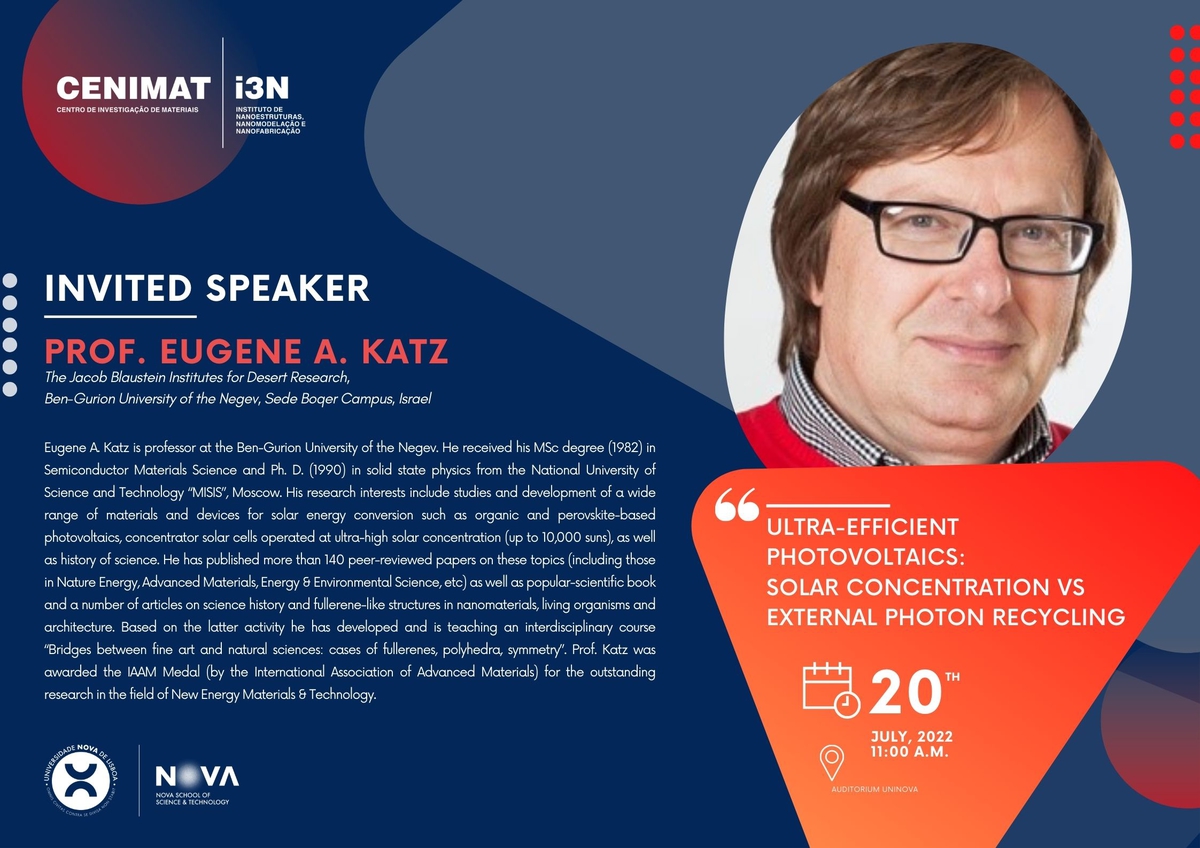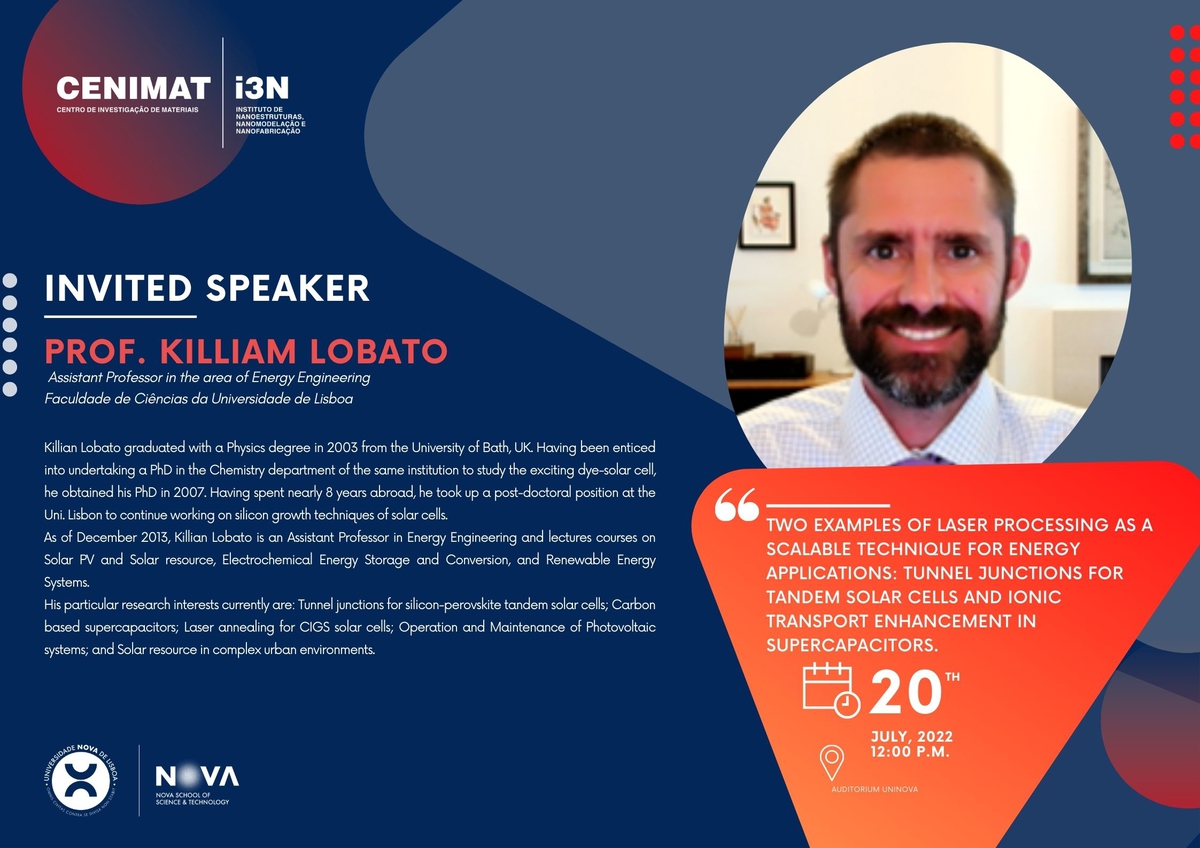"Two examples of laser processing as a scalable technique for energy applications: Tunnel junctions for tandem solar cells and ionic transport enhancement in supercapacitors" por Prof. Killiam Lobato (Assistant Professor in the area of Energy Engineering, FCT-UNL)
Data|Hora: 20.Julho.2022 |
12H00
